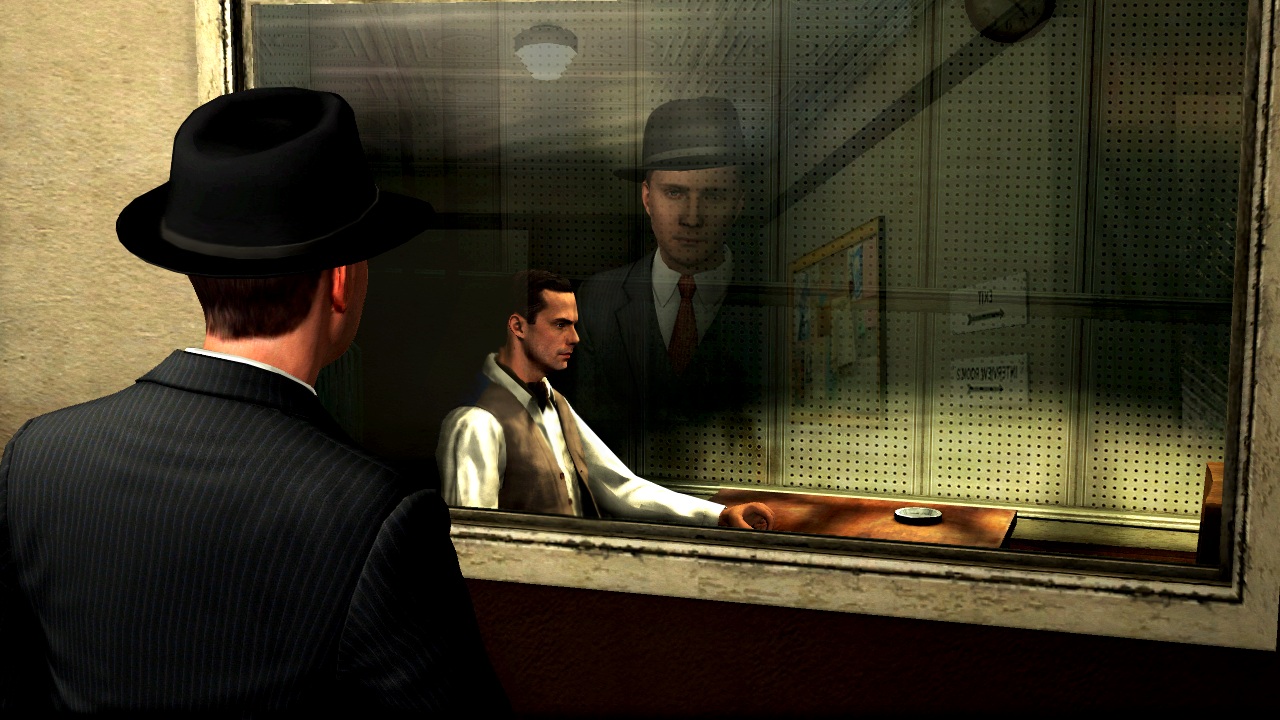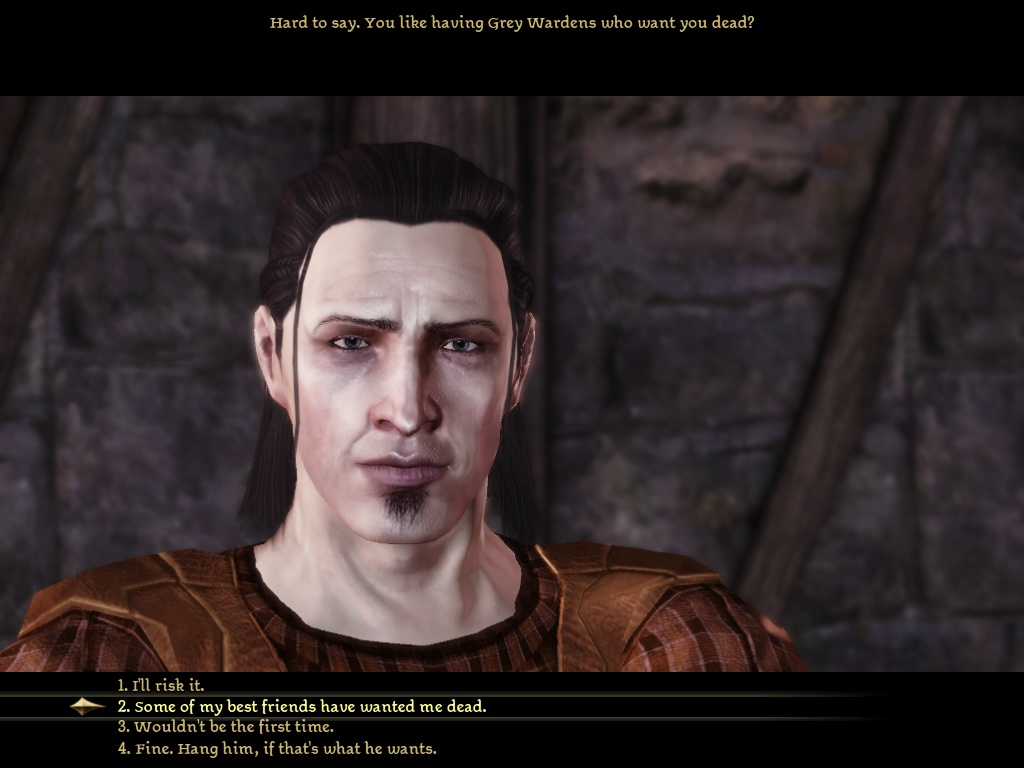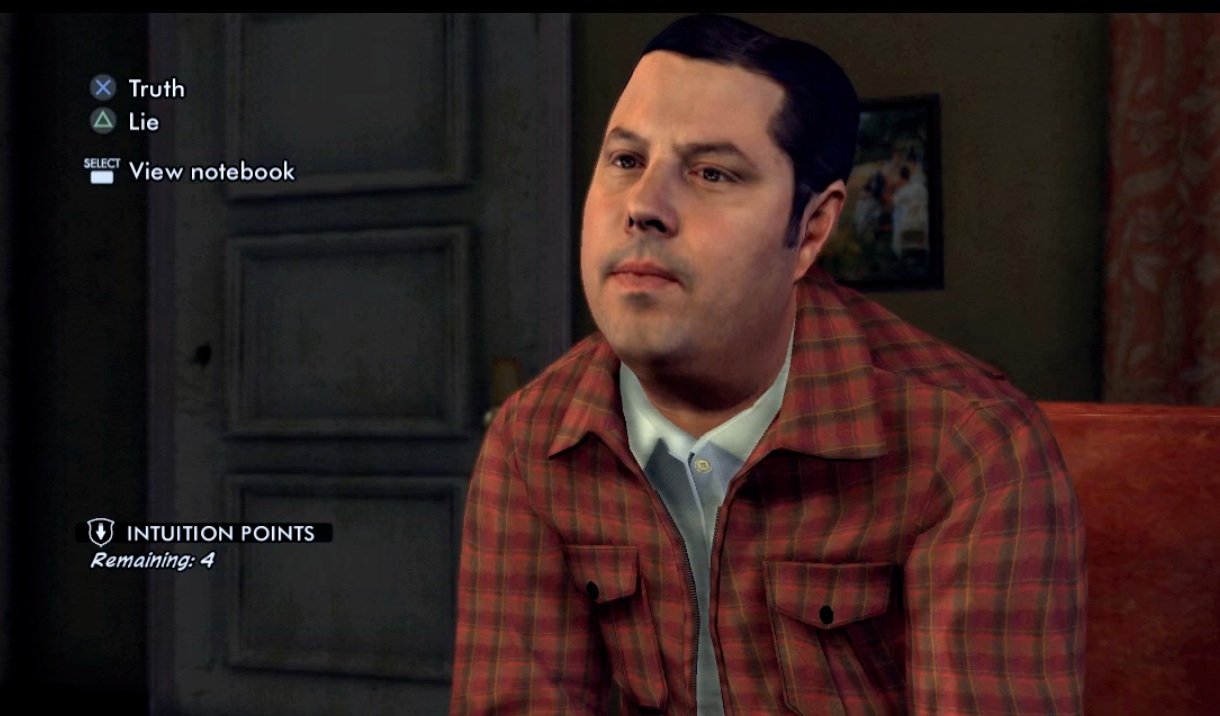
Featured Blog | This community-written post highlights the best of what the game industry has to offer. Read more like it on the Game Developer Blogs or learn how to Submit Your Own Blog Post
L.A. Noire's Interrogation System
A look at the interface of L.A. Noire's interrogations.

Throughout L.A. Noire, the player investigates crimes largely by questioning suspects, witnesses and medical/forensics experts.
The advanced facial animations are used to gauge a rough accuracy of the given testimonies, and, combined with the pre-existing knowledge of the crime and the player's own intuition (often boiling down to simple prejudices, which I'm sure someone else is already writing a post about) the player chooses a response.

la_noire_booth
L.A. Noire does a great job of setting the mood.
This is done with a half-circle of shortcut buttons: truth at the top, doubt on the middle-left, and lie at the bottom. Truth assumes the interviewee's story is correct; lie confronts them about its validity, often requring the player to present a piece of evidence that contradicts their statement; and doubt hovers somewhere in between the two.
Mass Effect used a similar streamlined dialogue system with its spoked-wheel interface. BioWare wanted a very cinematic feel for the game, including its dialogues, so this made perfect sense.

mass_effect_2_dialogue
The Mass Effect wheel was a pretty elegant solution to a dialogue interface.
The player didn't need to read through a long list of possible responses, scroll down to his preferred one, then listen to his character speak it back word-for-word. Instead, the desired option could be selected instantly based on a keyword or a short blurb. The locations of these often followed a simple pattern, and a few extra choices were included to allow the player "good" and "evil" reactions.
Some people were not satisfied with this approach as they found that Commander Shepard would periodically say things they did not expect. I never had this problem, but maybe that's because I assumed Shepard was a pre-existing template I was occasionally steering with my own preferences.

dragon_age_dialogue
Albeit a bit more clunky, the dialogue tree worked well in Dragon Age.
BioWare's other game at the time was Dragon Age, and it used a more traditional dialogue-tree system. This also made perfect sense as the game placed greater emphasis on creating a player avatar and defining him/her through interactions with other characters. Such an approach required much more granularity in the dialogue options, e.g., "What heirloom?" might have been OK as a single choice in Mass Effect, but in Dragon Age it had to be split up into multiple, well-defined choices:
How long has this heirloom been in the family?
What is its history?
Who was the heirloom's last caretaker?
Do you think it's wise to worry about such things while we're in the middle of a war?
I'm sorry for your loss, but we have to move on...
We'll get it back even if it means going to the ends of the world!
We've all lost our favourite trinkets at some point; get over it.
If we come across it, you'll be the first to know!
And so on.
Of course L.A. Noire stars a strictly defined character, so on the surface it seems more suited to a simplified Mass Effect system than a complex Dragon Age one. However, its dialogue scenes are not casual, open-ended conversations.
They're interrogations.
These interrogations require detailed information, observation, and a bit of luck to properly resolve. There's no back-tracking or second guessing, and navigating the system with the vague options of truth, doubt and lie can be a bit frustrating.
For example, if Detective Cole is interviewing the wife of a murder suspect and she tells him that the murder weapon isn't hers, that might be the absolute truth. After all, the firearm is registered to her husband, and the gun-store clerk confirmed his identity.
If I select "truth," though, it might permanently close off that topic of conversation. Since the gun is a pivotal clue to the case, I want to get all the information about it that I can.

la_noire_interrogation
He seems like he's holding on to some extra information, but I'm afraid of pushing him as it might result in Cole leaning across the table and repeatedly punching him in the face.
There's always the "doubt" option, as in I doubt she's telling the full story, but I have no idea how Detective Cole will react to it. He might console her with a soft tone and ask her if there's anything else she can remember that might help the police prove her husband's innocence. On the other hand, he might start screaming at her about obstruction of justice and how her sleaze-bag of a hubby will never survive prison.
It's impossible to tell what the player character will do, but that could be remedied with more detailed conversation options (and perhaps more conversation options in general). As things stand, I've repeatedly found myself taking the wrong conversational turn not because my assumptions about the case were incorrect, but because I failed to properly convey them to the game.
Now this might seem like a major complaint, and although it's significant, it doesn't ruin the experience. The interrogations don't always have to be successfully resolved, and a few sparse hints aid their traversal.

la_noire_cole_pissed
Take it easy, Cole! All you've got on the case is circumstantial evidence!
I also commend the developers for sticking to their guns. There are no extra HUD meters that break the suspension of disbelief, and the dialogue sequences largely rely on the script, the actors' performances, and the technology behind them. The results are quite immersive, and actually much more intense than the checkpoint-rich action sequences.
I just think the game would've benefit from more information to accompany the delicate and often volatile interrogations.
Radek Koncewicz is the CEO and Creative Lead of Incubator Games, and also runs the game design blog Significant-Bits.
Read more about:
Featured BlogsAbout the Author(s)
You May Also Like







.jpeg?width=700&auto=webp&quality=80&disable=upscale)








